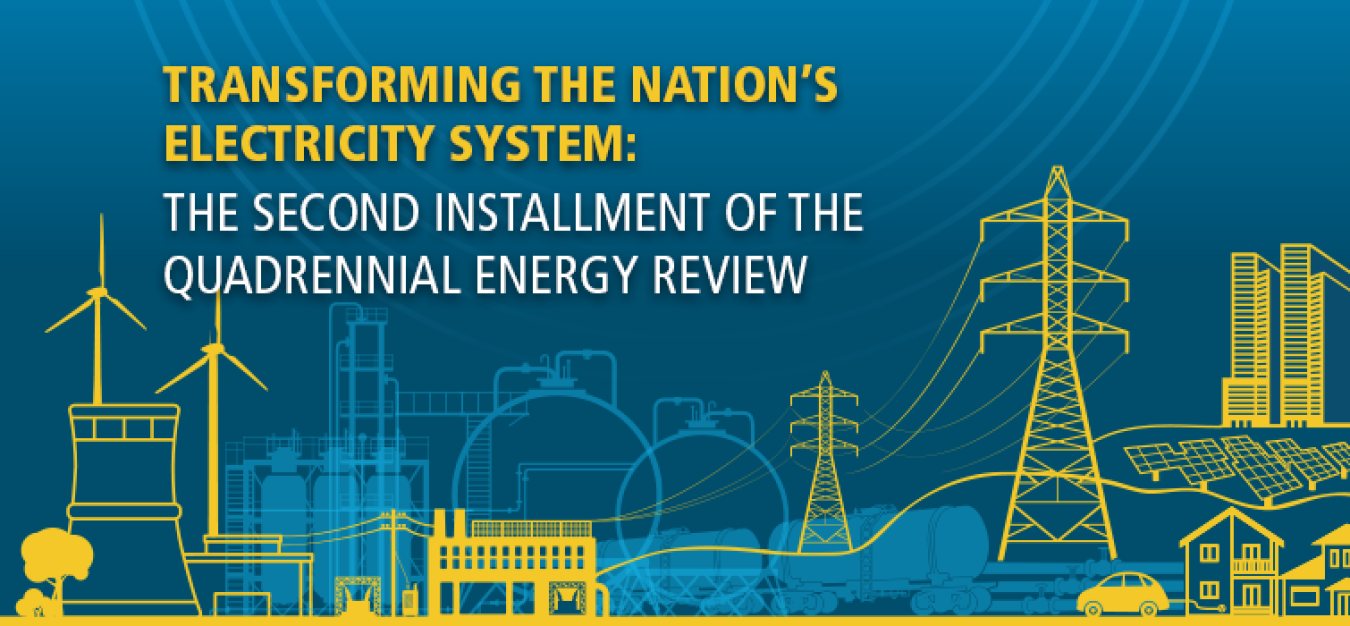
Downloads
- Second Installment Report: Transforming the Nation's Electricity System
- Second Installment Informational Slide Deck
An Integrated System of the Electricity System
On January 6, 2017, the Quadrennial Energy Review (QER) Task Force released the second installment of the Quadrennial Energy Review report titled “Transforming the Nation’s Electricity System.” The second installment (QER 1.2) finds the electricity system is a critical and essential national asset, and it is a strategic imperative to protect and enhance the value of the system through modernization and transformation. QER 1.2 analyzes trends and issues confronting the Nation’s electricity sector out to 2040, examining the entire electricity system from generation to end use, and within the context of three overarching national goals: (1) enhance economic competitiveness; (2) promote environmental responsibility; and (3) provide for the Nation’s security.
The report, which provides 76 recommendations that enable sector modernization and transformation, provide the building blocks for longer-term, planned changes and activities undertaken in conjunction with state and local governments, policymakers, industry, and other stakeholders.
Today's electricity system was developed over more than a century and includes thousands of generating plants, hundreds of thousands of miles of transmission lines, distribution systems serving hundreds of millions of customers, a growing number of distributed energy resources, and billions of end-use devices and appliances. These elements are connected together to form a complex system of systems. The electricity sector is, however, confronting a complex set of changes and challenges, including: aging infrastructure; a changing generation mix; growing penetration of variable generation; low and in some cases negative load growth; climate change; increased physical and cybersecurity risks; and in some regions widespread adoption of distributed energy resources (DER). How these changes are managed is critical and could fundamentally transform the electricity system’s structure, operations, customer base, and jurisdictional framework.
The second installment of the QER is based on robust analyses and a transparent stakeholder engagement strategy. QER 1.2 analysis was completed by multiple methods over many months, including the following:
- Commissioning baseline reports to provide an overview of the current state of the electricity system;
- Commissioning analyses, modeling, synthesis, and white papers from U.S. National Laboratories, energy consulting, and analytics firms;
- Performing analysis and modeling within EPSA, in collaboration with partners across DOE and other Federal agencies, to generate analysis, policy working papers, and reports;
- Meetings with DOE and staff-level agency representatives and experts on the findings and recommendations proposed in QER 1.2; and
- Convening technical workshops with relevant stakeholders and producing write-ups of findings and stakeholder viewpoints.
The QER Task Force gathered ideas and advice from numerous sources through stakeholder engagement. State and local governments, tribes, large and small businesses, universities, National Laboratories, nongovernmental and labor organizations, consumers, and other stakeholders and interested parties provided input through an integrated outreach strategy. Input occurred through informal meetings, Congressional briefings, speeches and presentations with industry associations, state government and tribal officials, environmental groups, and other electricity stakeholders; a public comment portal on the DOE website; and seven regional public stakeholder meetings.
First Installment
Download the full report, learn more about the first installment, examine the analytical library, and review the status of recommendations.
Presidential Memorandum
The Presidential Memorandum establishing the QER is available on the White House webpage.
Second Installment
Download the full report, learn more about the second installment, examine the analytical library, and view stakeholder comments.
Stakeholder Meetings
Visit our Stakeholder Engagement page to review videos, agendas and other documents from our public meetings across the country.

